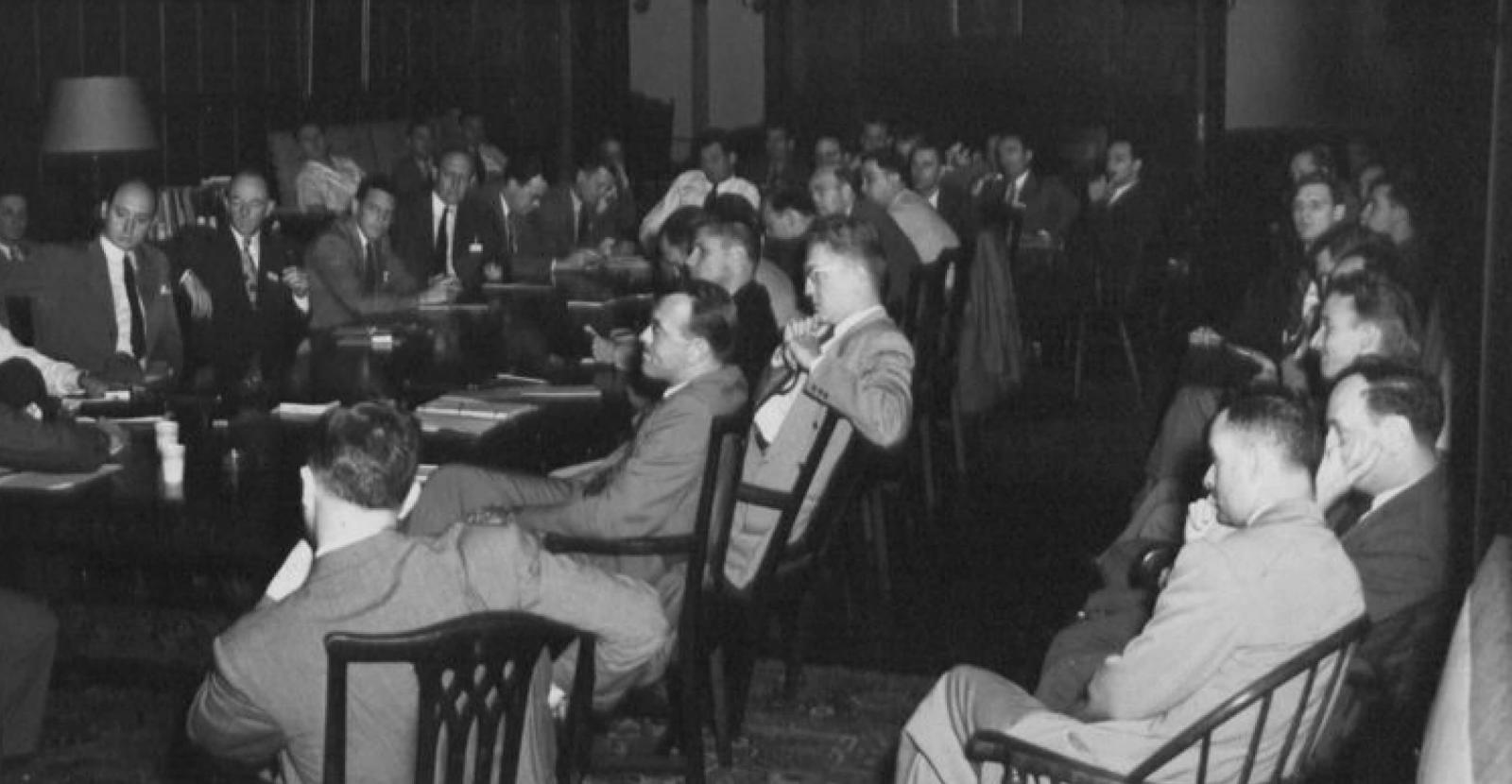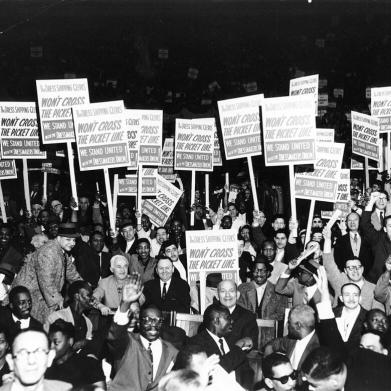U.S. entry into WW2 transforms the labor market
As U.S. military employment grew from about 793,000 before the war to a height of 11.3 million, full- and part-time employment in U.S. private industry increased from 33.5 million to 38.2 million. However, while nearly 30 percent of the non-agricultural workforce was unionized, the organizing abilities of labor unions were limited by the creation of the War Labor Board that held ultimate authority for resolving labor disputes. (3)
Over the next several decades, labor market changes occurring before, during, and after the war would help IR Section researchers continue a line of study that first began soon after the Section’s founding: The role of unions and their impact on both industry and workers.
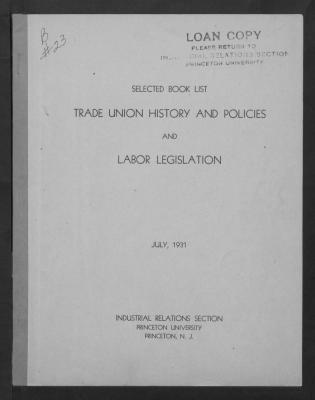
A devotion to public service helps win “the supply chain war”
Throughout the war, IR Section faculty and staff remained critically devoted to public service and played essential roles in the U.S. war effort. In 1940, Director J. Douglas Brown was approached by President Roosevelt to study–in secret–the labor force challenges involved in rapidly expanding key industries that would be critical to U.S. war mobilization.
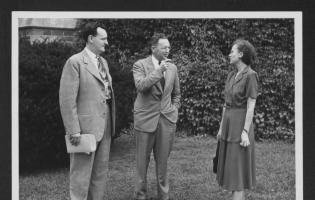
After the U.S. entered the war, Brown and IR Section colleagues served as consultants to the war department on issues that ranged from contractor policies to the optimal allocation of personnel across industries given constraints of the ongoing draft. Helen Baker, IR Section librarian and the first woman to achieve the rank of associate professor at Princeton University, played a major role at the War Department, applying her prior research on women in the workforce to help guide the rapid employment of women in key wartime industries.
"In getting background for administrative decisions in Washington, it was far easier to ask the Section’s staff to make a quick survey than to use the ponderous machinery of government agencies. In a very real sense, Princeton was lending the United States government the staff and resources of the Section at a very critical period in the mobilization effort.” J. Douglas Brown, "The Industrial Relations Section of Princeton University in World War II. A Personal Account by J. Douglas Brown.” (The Industrial Relations Section, 1976)]
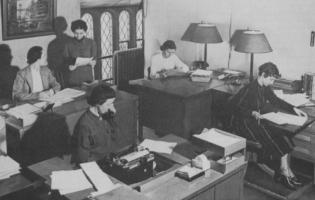
Wartime lessons meet economic theory
In 1948, Princeton Professor Richard Lester, along with labor mediator and professor Joseph Shister, edited the volume “Insights into Labor Issues.” The book combined economic theory with institutional knowledge gathered by several economists who served in various capacities under the War Labor Board.
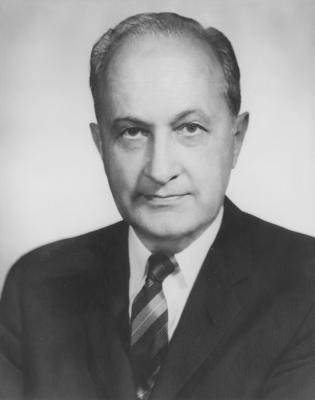
Through “Insights into Labor Issues” and other academic works, Lester earned a reputation among academics for his approach to research that combined neoclassical economics with an understanding of the institutional details of imperfect labor markets. At the annual American Economic Association meeting in 1947, Lester founded the Industrial Relations Research Association, ultimately recruiting more than 1,000 economists to join.
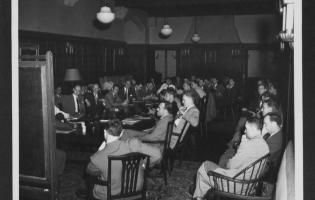
Strength of U.S. organized labor ebbs and flows
The end of the war and the dissolution of the War Labor Board brought with it a resurgence of labor disputes to address. In a review of this time period, Richard Lester wrote that labor strikes “reached an all-time peak in 1946, with almost 5,000 strikes involving 14.5 percent of the employed industrial workers and resulting in a direct loss of 116 million ‘man-hours’ of work.” (4)
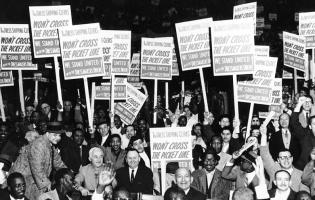
By 1953, union membership was at an all-time high of 16.5 million people. However, the Taft-Hartley Act of 1947, passed by Congress despite a veto from President Truman, severely curtailed the ability of unions to strike and organize. The effects of that law and others, combined with the deteriorating economic conditions of the 1960s and 1970s, a growth in anti-communist sentiments during the Cold War, and a trend toward offshoring ultimately diminished the power of organized labor in the U.S. In 1981, negative views toward organized labor in public opinion polling reached an all time high. From 1979 and 1989, overall union membership shrunk by 5 million members. (5)
Albert Rees–leading labor union expert–joins the IR Section
“This uninterrupted commitment to careful measurement informed by public policy issues and by the precepts of economic theory is the type of scholarship that has the hallmark of the best Labor Economics research which is why so many of today’s researchers think of Rees as their intellectual paragon.”- Orley Ashenfelter and John Pencavel, “Albert Rees and the ‘Chicago School of Economics” (Edward Elgar, 2010)
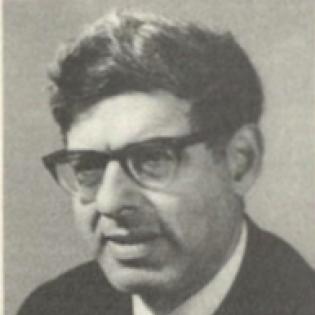
In 1966, Albert “Al” Rees–known for the application of empirics to the study of labor economics–joined the IR Section from the University of Chicago. Rees served as IR Section director from 1968 to 1971 and as provost of the university from from 1975 to 1979.
With a background in the “Chicago School of Economics,” Rees’ views on labor unions contrasted with those of other IR Section faculty members. Though Rees saw unions as economically undesirable, he believed that they served as a safeguard against the erosion of democratic principles, writing that “their noneconomic activities are, by and large, highly beneficial. Through grievance procedure, seniority, and control of the speed and conditions of work, unions have given the industrial worker a new sense of dignity, individual worth, and participation in the process of production” and that unions provide “the best [sic] guaranty against movements which might lead workers to demand the exchange of our democratic freedoms for the ‘security’ of a police state.”
A celebrated empiricist, Rees’s contributions to the field as both a researcher and mentor were innumerable.
IR Section faculty dissect the critical role of unions in changing labor markets
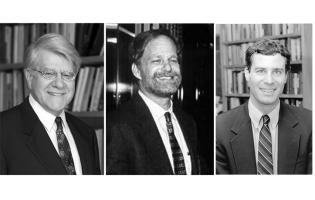
Throughout this multi-decade period of labor market turmoil, unions and other forms of organized labor remained a strong focus of IR Section research.
Starting in the early 1960s, Orley Ashenfelter was studying what conditions led to growth in both labor disputes and union membership. In a series of papers in the early 1990s, Henry Farber and Alan Krueger argued that nearly all of the decline in union membership between 1977 and 1991 could be attributed to declining demand for membership because of increased job satisfaction or declining belief that unions could negotiate better working conditions or pay.
In 2012, David Lee and Alexandre Mas–both of whom have served as IR Section directors–published an important study showing under what circumstances unionization at large public companies leads to a reduction in company market value.

Additional reading:
Paper: Bargaining Theory, Trade Unions, and Industrial Strike Activity (1969)
Paper: Unions and Inequality over the Twentieth Century: New Evidence from Survey Data (2021)
Notes
3) “Princeton University’s Industrial Relations Section in Historical Perspective: 1922-2015” (Industrial Relations Section, 2016)
4) “The Industrial Relations Section of Princeton University, 1922 to 1985” (Industrial Relations Section, 1986)
5) Jones and Saad, Gallup Poll Social Series.

